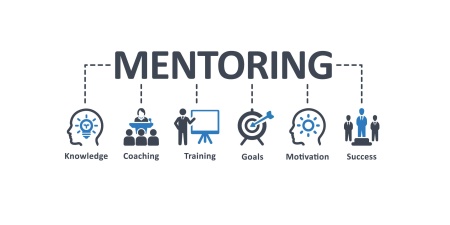By Mike Hill
Ever wonder how much – or how little – your company’s employees are focused and engaged in what they do on the job?
There’s a significant cost to employee disengagement. According to a 2016 Gallup survey, 68 percent of employees in the U.S. work force is disengaged from their jobs. That means almost seven out of 10 of your co-workers (or, for managers, your employees) are disengaged. How’s that for an eye-opener?
What’s the cause of employee disengagement? One of the issues that prompts disengagement is if employees feel they are not being compensated fairly. Some employees cite a lack of freedom to do their jobs effectively (think micro-managing). If you’re a manager, you have to consider that you might be the problem. Author Paul Nolan reports one study showing that in the United States, 50 percent of employees have left a job at some point in their careers to get away from a manager. Still another reason for disengagement can be a lack of clearly defined goals and expectations for someone’s position.
The Cost of Disengagement
It’s important for business operations to identify and deal with employee disengagement because disengaged employees undermine what their engaged co-workers accomplish. That lowers overall productivity and work place morale. It also takes a toll on the bottom line. Disengaged employees are estimated to cost U.S. businesses $450 billion to $550 billion of lost productivity each year, according to information reported in Gallup – State of the Global Workplace. Gallup says a single disengaged employee can cost his or her company $3,400 for every $10,000 in annual salary.
What can be done about disengaged employees? I agree with consultant Scott Crabtree’s admonishment that, “You cannot buy somebody’s engagement, but you can fail to buy it.” He adds, “fair compensation is necessary but not sufficient to get employee engagement.”
I write and speak about ways to improve employee performance through the use of employee evaluations, and I train employees how to do them in my practice. Evaluations are tools that can improve employee engagement by increasing the level of employee input and focus on their performance. Here are my recommendations for increasing employee engagement through goal setting and performance evaluations.
Goals
Study after study has shown that challenging employees to meet goals motivates them to a higher performance level. The best way to develop goals for your employees is to have them help set their own performance goals. Ask them to come up with two or three ideas for goals. Make sure that the goals are measurable, trackable and attainable. When employees help set their own goals, it’s more likely that they will accomplish them.
Alignment
It’s necessary to identify how such tasks and accomplishments align with the organization’s needs. The best way to achieve alignment is to explain how an employee’s work fits in the big picture. To accomplish that, you might show where an income-producing goal allowed the company to invest in a specific project, for example. Or you could show how achieving a goal saved money that would have had to be spent if it was not accomplished. If you can achieve alignment of employee goals with company goals, the company wins.
Progress
Employee progress needs to be celebrated, and it’s crucial to acknowledge when an employee accomplishes progress measurements. These don’t have to be huge or expensive celebrations. The gesture can be as important as any reward and even a little thank you goes a long way. For instance, more than 10 years ago we gave each employee a silver dollar on payday to celebrate having a great month where I worked. To this day, when I see many of those employees, they still talk about receiving that silver dollar. It was the recognition and the gesture that was important, not the monetary value. It created a lasting impression.
Employees’ Roles
Creating and maintaining an engaged workforce isn’t just management’s responsibility. Employees can be encouraged and held accountable for, making engagement part of their own performance improvement initiative. You can set some of their goals, but they also can set some of their own.
When employees are truly engaged in their work, the company will experience a change in its culture. It will become a place of highly accomplished employees. Such workers will want to work alongside other highly motivated employees. Disengaged workers will not want to stay in that atmosphere. That’s actually good for your business.
In my own distribution company, after we set measurable goals, most employees made the effort to meet or exceed those measurements. The employees who were disengaged complained for a while, but when they saw that the majority of the employee were embracing the standards, they realized that this was not the environment for them and they resigned. After our goals and standards were in place, we even put this language into our hiring ads. That way, potential employees knew before they applied for a position what our work culture was and how we treated our people.
What’s the payoff for making this type of effort? According to Reese Haydon’s, “Show Me the Money: The ROI of Employee Engagement,” there is plenty, including:
Engaged companies grow profits as much as three times faster than their competitors.
Customer loyalty is two times higher
Employee productivity is two times higher
Expensive turnover costs are cut, and the rate is two times lower.
The effort you take in assuring you have engaged employees working for you clearly is worth it, since it equals more money to your bottom line.
Mike Hill, who has more than 25 years of experience in industrial distribution, is one of America’s leading experts on employee evaluations. His proven tips for how, why and when to perform employee evaluations have been presented at conferences the world over. His new book, “Measuring to Manage: Using Measurable Data to Get Maximum Employee Performance,” joins two others he has written on using data for management practices.









